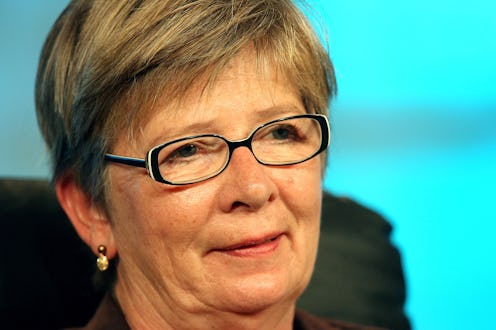Books
Ehrenreich's Deep Memoir Searches for the Mystical
The subtitle of Barbara Ehrenreich’s Living With a Wild God: A Nonbeliever’s Search for the Truth About Everything (Hachette) promises a big revelation by the book’s end or, at the very least, a narrative that centers on a solid attempt to reach one. The slim memoir, which chronicles a series of vague experiences that Ehrenreich had in her teen years that are best explained as "mystical encounters," does manage to cram more biographical information into less than 300 pages than most tomes twice its size. And although uncovering the "truth about everything" (or, at the very least, the truth about her own seemingly transcendental experiences) might have been what the author was aiming for, the search proves an ultimately fruitless one for both writer and reader.
Ehrenreich, best known for her economic- and feminist-edged works like Nickel and Dimed and This Land Is Their Land, made her professional name by way of hardcore journalistic endeavors. She is the last person one would expect to hear touting stories of mystical encounters — and Ehrenreich herself knows that, which is precisely why it’s taken her so long to talk about or write about her experiences with the mystical and the transcendent. Ehrenreich’s background as a journalist and scientist (her grad work was in cellular biology) renders her childhood experiences automatically interesting: here is a woman who is a lifelong atheist (one of the first things we learn about Ehrenreich in the book is that she was born into a family of hardcore atheists, and she still considers herself one) who has dedicated her professional work to the search for empirical knowledge sharing stories about something best described as “the transcendent.” But that doesn’t mean Living With a Wild God is able to deliver anything beyond a series of interesting ideas.
At its heart, the book is a memoir, and the majority of its pages are filled with Ehrenreich’s recollections of her younger years, including a numbing series of ruminations about the minutiae of her daily life. Fans of her previous works will likely enjoy learning more about the author on a deeply personal level, and Ehrenreich’s writing about even the most banal of topics can be surprisingly engaging, but it is far from consistently interesting. It is especially wearing once she actually introduces her supposedly mystical experiences, which come to her by way of a series of "visions" that are never described in satisfying terms.
Instead of applying the same level of detail that her childhood memories get to explaining her visions to her readers, most of them are simply tossed off. We only learn that most of her "visions" amounted to her seeing things in a new light, quite literally, as one of the few hard and fast details that Ehrenreich offers about her experiences is that they usually occurred during afternoons, when the light was hazy.
If this sounds like a frustratingly obtuse way to explain the very experiences that the book is meant to document, that's because Ehrenreich herself is scarcely able to offer any other details about her visions.
Ehrenreich’s transcendent experiences, scattered and short as they were across her teen years, were all apparently leading to one massive epiphany — a night spent out in the “lunar landscape” of a desert town, where she experienced her own version of “the burning bush” vision. As Ehrenreich tells it:
…the world flamed into life. How else to describe it? There were no visions, no prophetic voices or visits by totemic animals, just this blazing everywhere. Something poured into me and I poured into it.
The author eventually came to believe she had seen God — or, at the very least, she felt that was the best explanation for what she had experienced. She was, somewhat unsurprisingly, made to feel odd and somehow incorrect when she tried to share her experiences. Say you’ve “seen God” in mixed company, and the resulting reactions are enough to make even the most dedicated believer feel a bit awkward, and Ehrenreich’s otherwise atheistic views didn’t help matters. Ehrenreich simply stopped talking about her experiences, literally binding up her writings on the experiences in a red folder that she hid away from everyone, including herself. But the author held on to the folder, toting it from place to place over the years, finally choosing to turn it into what would become Living With a Wild God, simply because she found herself to be the most well-equipped person for unraveling the tale.
Ehrenreich’s belief that she was the only person who could write the book may have proven misdirected, however, because although she may be the best person to couch her mystical experiences in plenty of colorful biographical details, she appears to be too close to said experiences to actually share them in a satisfying way.
